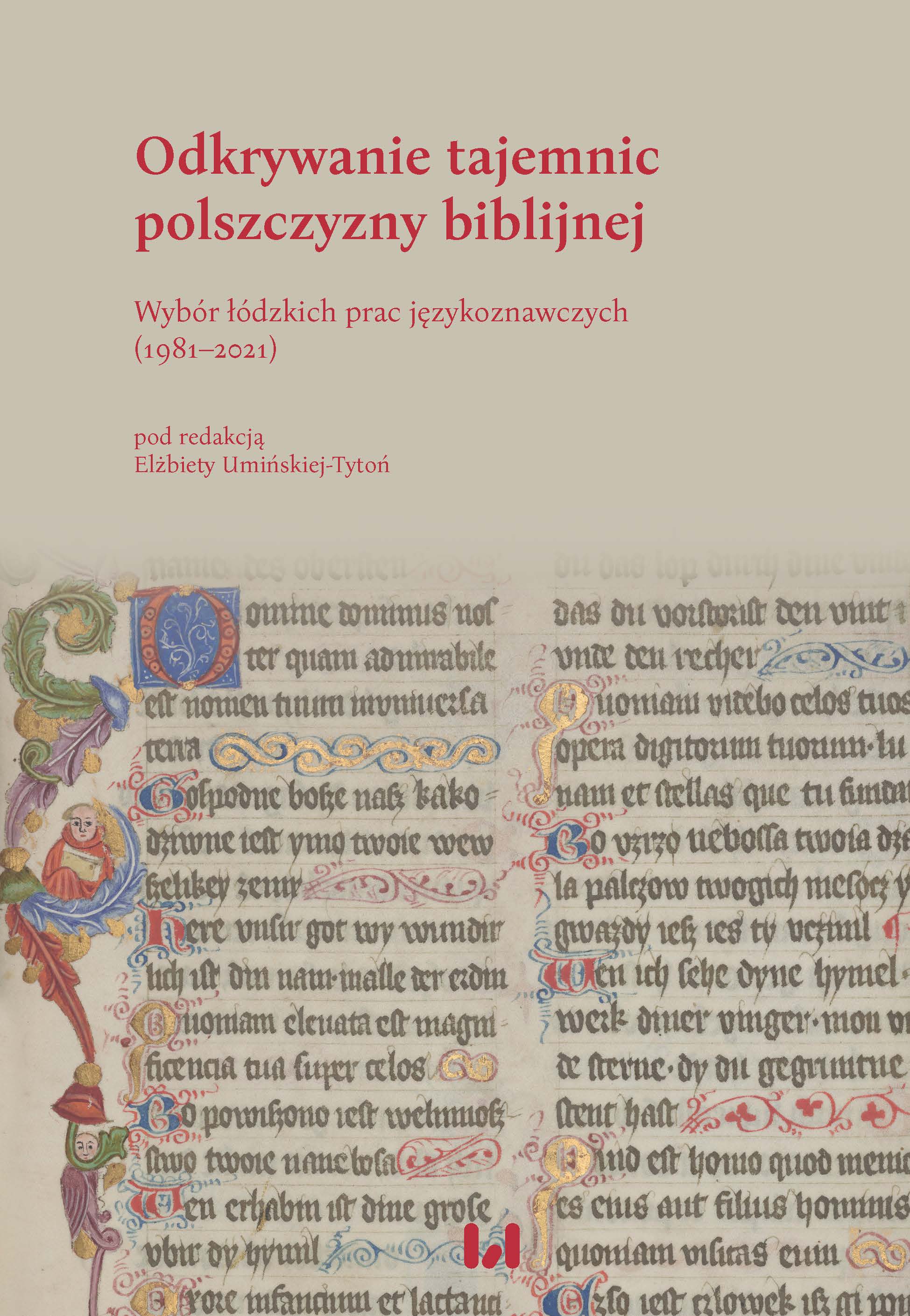Wartość stylistyczna nazw geograficznych w polskich przekładach "Nowego Testamentu"
The stylistic value of geographical names in Polish translations of the "New Testament"
Author(s): Rafał Zarębski
Subject(s): Literary Texts, Theoretical Linguistics, Biblical studies
Published by: Wydawnictwo Uniwersytetu Łódzkiego
Keywords: toponymy; translation; New Testament; stylistics; translocation; adaptation
Summary/Abstract: The aim of the article is to describe the relationship between the linguistic shape of geographical names and the stylistic plane of old and contemporary Polish translations of the New Testament. The most typical procedures modifying the toponymic layer of both the Greek original and the Latin Vulgate include: removing or leaving obsolete nomenclature structures, e.g. Mountain, called Olive // Mountain of Olives, avoiding various variants of the same name in favor of one form, e.g. Achaea, Greece> Greece, striving for nomenclature precision, e.g. Antioch> Syrian Antioch, removing or adding appeals that indicate the type of a named object, e.g. Nazareth // city of Nazareth, translation, e.g. the Decapolis> Dziesięciogród, or translocation of names, e.g. Abilene. The result of these techniques are sometimes contradictory tendencies to: modernizing the forms to achieve greater communicativeness of the text, respect for the translation tradition, care for the local color of the events described in the New Testament. As a result of the observations made, it turned out that the solutions used by translators in relation to geographical names can shape the style of the text.
Book: Odkrywanie tajemnic polszczyzny biblijnej. Wybór łódzkich prac językoznawczych (1981–2021)
- Page Range: 261-272
- Page Count: 12
- Publication Year: 2022
- Language: Polish
- Content File-PDF

